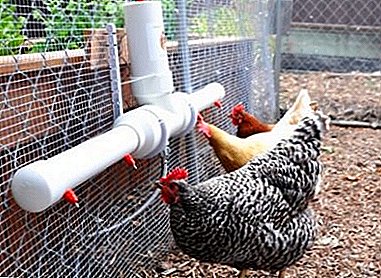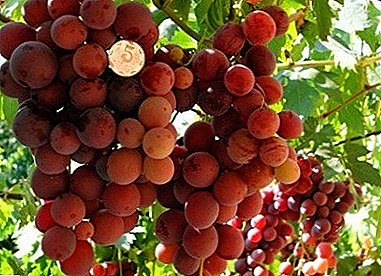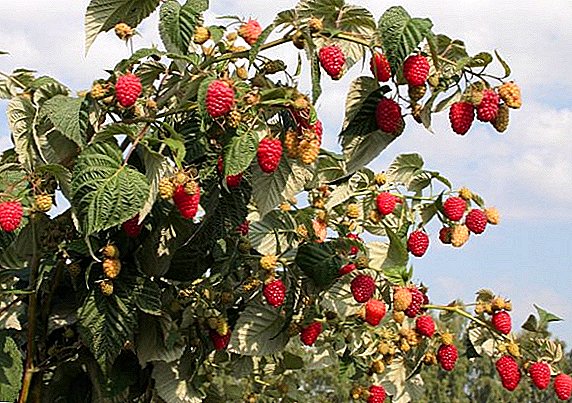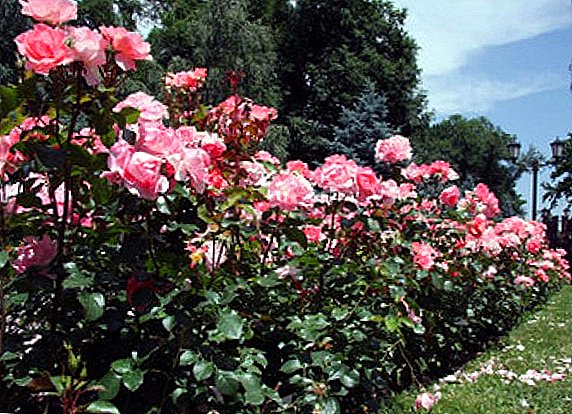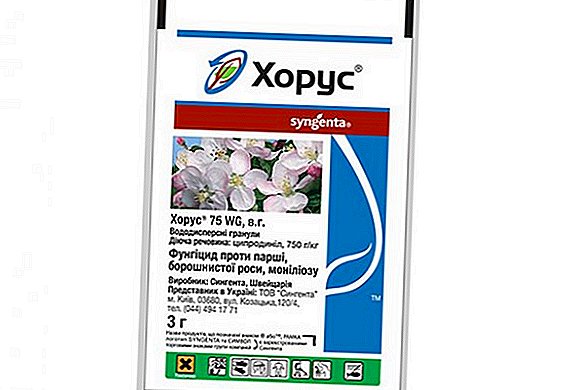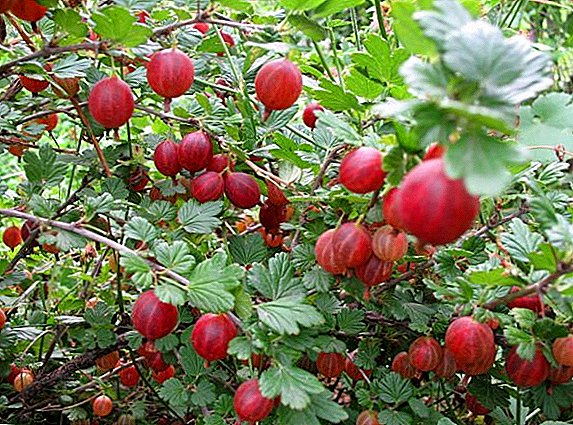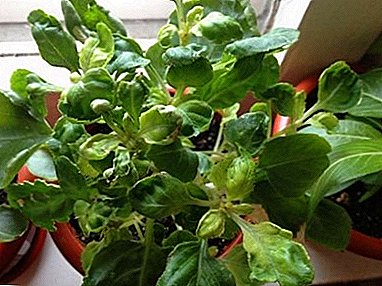
Carrots are an unpretentious crop that any gardener can handle. However, this sweet vegetable does not grow well on poor soil, so you have to feed carrots so that it grows large, smooth and sweet.
Many prefer chemicals from the store folk remedies, proven experience of many gardeners.
Next, consider what you can feed after germination, as well as what fertilizers can not be used.
What kind of fertilizer does it differ from store?
Folk remedies are unspecialized fertilizers checked by many gardeners. Unlike industrial fertilizers, they are either prepared from waste (food, garden), or bought, but not in a specialized garden center, but in a regular store or pharmacy. These are substances that are not formal feedings, but, according to experience, have the desired effect on plants.
What is better to use?
Although many gardeners do not want to use "chemistry" for feeding carrots, it is important to understand that both folk remedies and industrial fertilizers play their part. For comparison, use the table.
| Comparison options | Shop (industrial) fertilizers | Folk remedies |
| Cost of | Expensive or cheap | Cheap |
| Danger to humans | Different hazard class depending on the drug | Safe when used correctly |
| Soil impact | Deplete | Do not deplete |
| Spectrum of action | Focused | Wide |
| When to apply | When it is necessary to add a specific element to the soil in a strictly defined quantity | When it is necessary to improve the structure and nutritional value of the soil as a whole. |
What can feed a root crop after germination and at another time?
What can water the vegetables for good growth? For feeding carrots are used different folk remedies. Each has its own pros and cons.
Salt
 Garden salt (sodium chloride) gardeners have long been used for salting the beds. Salt helps to quickly dissolve in the soil nutrients, so carrots absorbs them completely.
Garden salt (sodium chloride) gardeners have long been used for salting the beds. Salt helps to quickly dissolve in the soil nutrients, so carrots absorbs them completely.
The effect on poor soils is especially noticeable - after salting the beds, carrots grow more sweet on them. However, the salt itself does not bring much benefit.
Yeast
 Baker's yeast are microscopic fungi that, when dissolved in water, secrete substances that accelerate the growth of carrots in carrots. They also enhance the activity of beneficial bacteria in the soil, thanks to which organic fertilizers are well decomposed and nitrogen and phosphorus are released.
Baker's yeast are microscopic fungi that, when dissolved in water, secrete substances that accelerate the growth of carrots in carrots. They also enhance the activity of beneficial bacteria in the soil, thanks to which organic fertilizers are well decomposed and nitrogen and phosphorus are released.
In their action, yeast fungi are similar to EM drugs, but much cheaper. Use of yeast is possible only in the heated earth. And if you apply this dressing all the time, the soil will lose organic matter and will become poor again. In addition, during fermentation, the yeast absorbs potassium and calcium.
Ash
 Ash is produced by burning something. In gardening using wood ash. It contains many beneficial substances (potassium, calcium, iron, sulfur, magnesium, boron, phosphorus).
Ash is produced by burning something. In gardening using wood ash. It contains many beneficial substances (potassium, calcium, iron, sulfur, magnesium, boron, phosphorus).
- If you prepare the ash from hard wood (oak, larch, poplar), then it will be a lot of calcium.
- And when burning weeds (wheat grass, grass) fertilizer will contain a large amount of potassium.
These substances are necessary carrots in the period of pouring root vegetables.
Ash is needed when growing carrots on acidic soils (which the culture does not like very much), because it increases the level of alkali in them.
The disadvantages of fertilizer include the ability to reduce the absorption of phosphate by plants, so the ash must be applied separately from the feed containing phosphorus. In addition, it is not recommended to use on strongly alkaline soils.
Iodine
 The substance consists of black and gray crystals with a violet metallic luster. It is sold in pharmacies in the form of a dark 5% alcoholic solution with a characteristic odor. Watering with iodine increases the yield of carrots, improves the taste and color of root crops.
The substance consists of black and gray crystals with a violet metallic luster. It is sold in pharmacies in the form of a dark 5% alcoholic solution with a characteristic odor. Watering with iodine increases the yield of carrots, improves the taste and color of root crops.
Of the disadvantages can be noted toxicity to humans. And in carrots, if the dose of iodine is too high, the leaves may turn yellow.
Nettle infusion
 Nettle infusion contains a lot of nitrogen and iron and is used immediately after sowing carrots, so that the plant has strong dense foliage that will provide adequate nutrition to the roots.
Nettle infusion contains a lot of nitrogen and iron and is used immediately after sowing carrots, so that the plant has strong dense foliage that will provide adequate nutrition to the roots.
Do not water carrots with infusion of nettle in the middle of the growing season, so as not to grow too "lush" greens to the detriment of the roots.
Mullein
 Liquid cow dung, or mullein, increases the content of humus in the soil and contains the necessary substances for carrots: nitrogen, phosphorus, potassium, calcium, magnesium and others.
Liquid cow dung, or mullein, increases the content of humus in the soil and contains the necessary substances for carrots: nitrogen, phosphorus, potassium, calcium, magnesium and others.
Mullear can be used for carrots only in the form of infusion and in small quantities, since an excess of this organic fertilizer can cause rotting of root crops.
Chicken droppings
 The composition of the litter also includes potassium, nitrogen, phosphorus, magnesium. It increases the yield of carrots, and due to the slow action it is able to “feed” carrot beds for 3 years after application.
The composition of the litter also includes potassium, nitrogen, phosphorus, magnesium. It increases the yield of carrots, and due to the slow action it is able to “feed” carrot beds for 3 years after application.
The disadvantages include the inability to use fresh - undiluted chicken manure contains a lot of uric acid, which can burn carrot roots.
Compost
 This fertilizer is obtained by pereplevaniya organic garbage and garden waste. As a result of proper preparation, it turns into humus - a nutrient layer containing beneficial microorganisms.
This fertilizer is obtained by pereplevaniya organic garbage and garden waste. As a result of proper preparation, it turns into humus - a nutrient layer containing beneficial microorganisms.
Compost can be used to fertilize the beds for carrots in the fall when digging, as well as mulch. Compost is free, but requires a lot of time and effort to prepare.
List of fertilizers that can not be used
What is not recommended to feed the root crop, because it then grows poorly or becomes tasteless? Sweet vegetables respond well to fertilizers, but some of them should be used with care or not at all:
- it is impossible to fill the beds with fresh manure, because of the large amount of organic matter in carrots, the growth point “burns” and becomes “horned” (the root is split in two or forms processes that impair its appearance and make cleaning difficult), less tasty and poorly stored ;
- Root crops also become insufficiently restless, if during the growing season the carrots are overfed with fertilizers with a lot of nitrogen.
Step-by-step instruction: how to feed vegetables?
 Most folk remedies are used in liquid form, so for the preparation of top dressing you will need:
Most folk remedies are used in liquid form, so for the preparation of top dressing you will need:
- glass half-liter or liter jar for the preparation of the concentrate;
- bucket for working solution;
- gloves not to get your hands dirty;
- spoon or scoop to measure the required amount of substance.
Consider, in what volume, in what way, in what period of the growing season and how many times do you need to make folk dressings for carrots.
| Top dressing | How to cook | How much / how to make | When to make | How many times and with what interval |
| Salt | 1 tbsp. dissolve a spoonful of salt in 10 l of water | Pre-well strait beds | In July and August, when roots are formed | 1 time |
| Yeast | 0.5 kg of yeast per 2.5 liters of warm water + half a cup of ash. The solution is diluted with water 1:10 | Root dressing | In the spring after germination to accelerate the growth of green mass, after 3 weeks and in mid-August | 3 times |
| Ash |
|
|
| 2 times |
| Iodine | 20 drops to 10 liters of water | Water aisle | In May, after germination | 1 time |
| Nettle infusion | In a 200-liter barrel 2/3 nettle, 1/3 water | Water under the root | At the beginning of the growing season | 2-3 times at weekly intervals |
| Mullein | Infusion 1:10, insist week | Water aisle | After thinning and after 3 weeks | 2 times in 3 weeks |
| Chicken droppings | Dissolve in water 1:20, insist 10 days outdoors | Water between the rows | In June, 2 weeks after germination | 1-2 times with an interval of 2 weeks |
| Compost | Spread over the bed, mix with the ground or spread out in the aisle | 6-8 kg per 1 m2 | In the autumn under the digging or as mulch | 1 time or during the season |
Prevention of damage to the root by pests
Salt helps:
- from carrot flies (water 3 times with an interval of 2 weeks, starting from the first days of June, gradually increasing the concentration of the solution: 300 g per 1 l of water, then 450 g per 1 l of water, then 600 g), after that you must spill the bed with clean water;
- from slugs - spray the bed with 10% salt solution.
Ash for prevention is used together with tobacco dust or tobacco infusion:
- from carrot flies - mix ash and tobacco dust 1: 1 and disperse in rows at the rate of 5-10 g per 1 m2;
- from the list - scatter ash in between rows, pour tobacco extract from above.
Possible mistakes
 With improper use of folk remedies for feeding carrots can not only help the plant, and even harm it. Common mistakes:
With improper use of folk remedies for feeding carrots can not only help the plant, and even harm it. Common mistakes:
- too large doses of fertilizer - the taste of the root crop will be worse, it will not be able to be stored for a long time;
- liquid top dressing on the sheet in the heat - carrot leaves can get burned by water droplets in the sun;
- use of fresh manure or too large doses of organic fertilizer - tops grow too large to the detriment of root crops (they become uneven).
Aftercare: Do I need to water the vegetable?
After fertilizing, carrot beds must be watered, otherwise useful substances will not be absorbed well into the soil, and loosen the aisles.
For summer residents who do not accept chemistry in their garden, feeding carrots with folk remedies would be a good way out. After all, they are available, inexpensive, safe. It will be necessary to allocate some time for the preparation of domestic fertilizers, but it will not be wasted for nothing - large, sweet root crops will grow.


